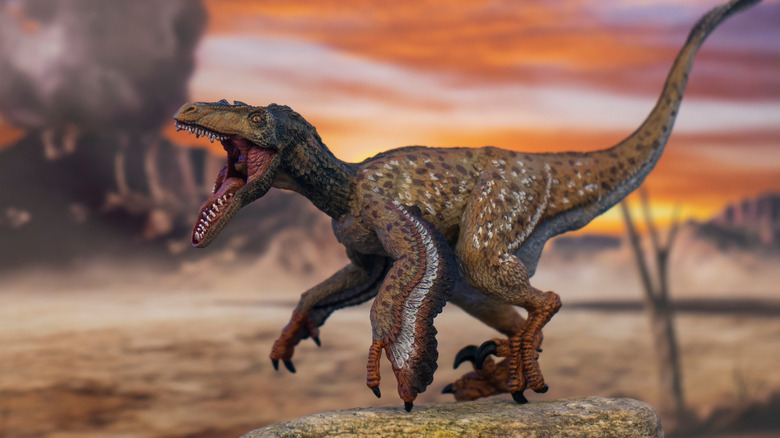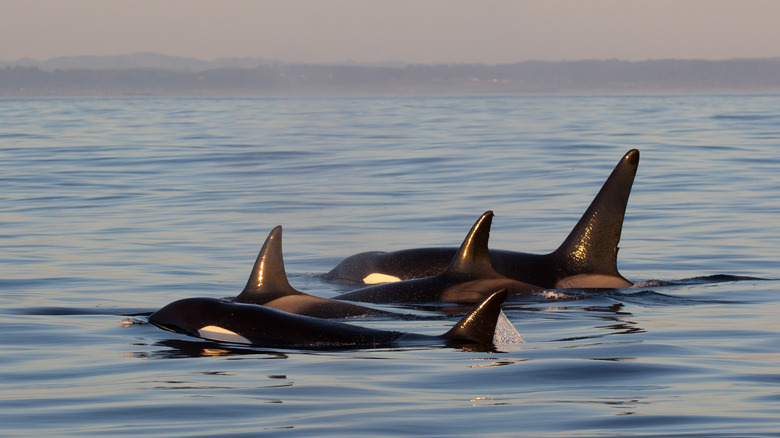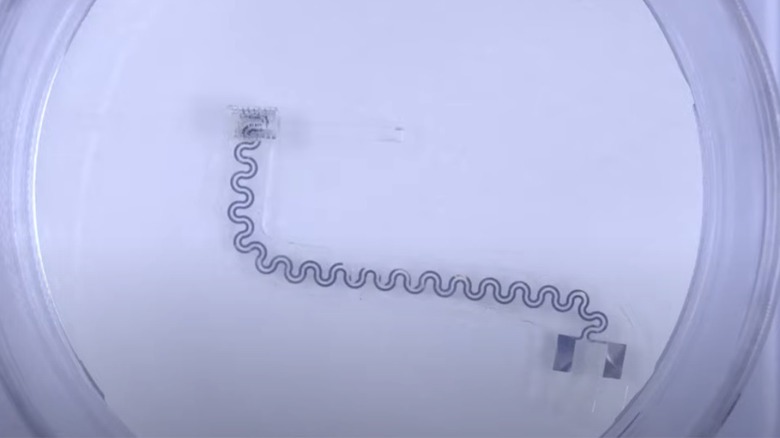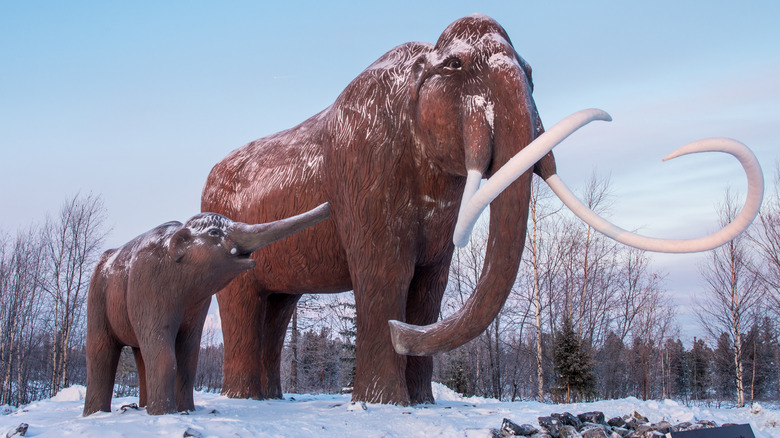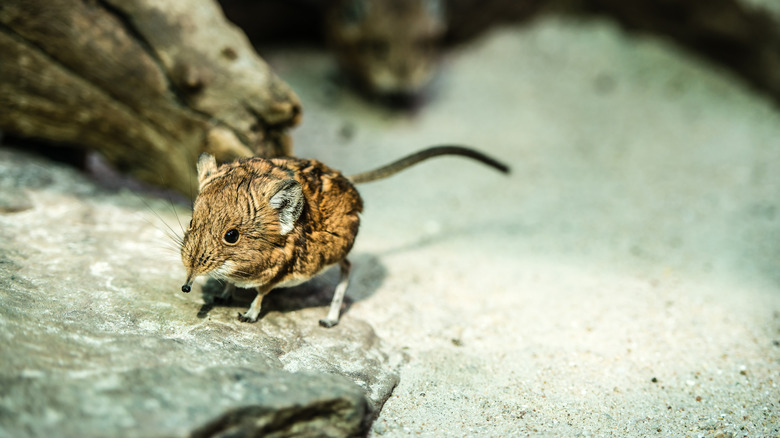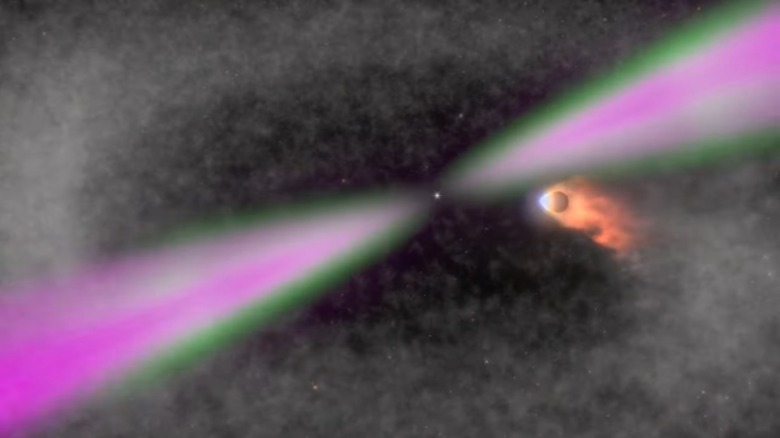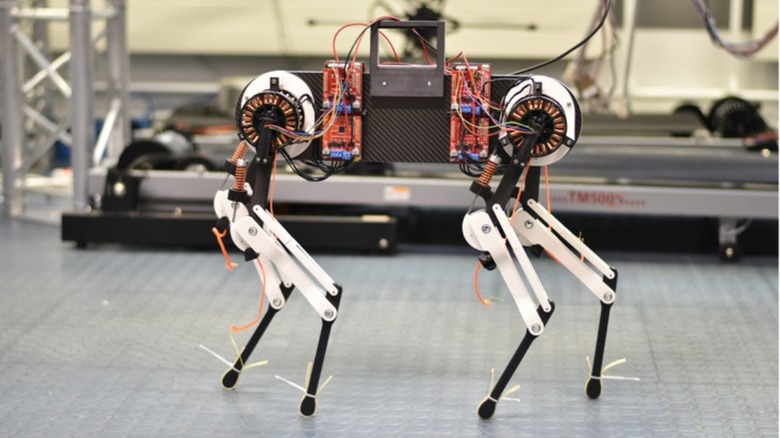12 Coolest Science Discoveries Of July 2022
We're living in an astounding moment for science. Every day, countless breakthroughs, inventions, and discoveries are announced. At this very moment, all around the world, an untold number of scientists are diligently peering into the dark corners of reality to illuminate their secrets.
According to Smithsonian Magazine, as of 2014, there were approximately 1.8 million scientific papers published in 27,000 journals, every year. That's nearly 5,000 papers published every single day, each one of which contains some new nugget of information granting a richer understanding of the natural world. If recent trends are any indication, those numbers continue to climb (via Research Gate).
Even if you dedicated your life to the study of all things scientific, there just isn't enough time in the day to keep abreast of everything being published. You'd have to read a paper every seventeen seconds nonstop in order to keep up. Alternatively, you could figure out how to slow down time so you can read everything and still have time to go to the bathroom, but then you'd be publishing papers and not reading them.
In any event, each of us has to make decisions about how we're going to spend our time and which discoveries we're going to give our attention. If you're feeling overwhelmed by the veritable buffet of knowledge on offer, these twelve stories are a good place to start.
Virtual reality helps people overcome phobias
Our brains adapted a fear response in order to avoid being eaten by predators or injured in dangerous situations. Fortunately, the world has gotten markedly safer over the last few tens of thousands of years such that opportunities for experiencing fear-inducing situations have declined. The trouble is our brains haven't quite gotten the message.
That, too, is natural. In a world where danger could cost you your life, it makes sense to err on the side of caution. As a result, our fear response is sometimes dialed up higher than is entirely reasonable. A significant portion of the global population lives with at least one irrational fear, the consequences of which negatively impact their lives.
There are a number of ways to treat phobias, perhaps the most common of which is exposure therapy. It works by putting a patient in a situation where they have to come face to face with the thing they fear. Now, researchers from the University of Otago, Christchurch have published a new study in the Australian & New Zealand Journal of Psychiatry studying the use of a virtual reality program called oVRcome to deliver digital exposure therapy.
The software, which is available on your phone as an app, takes into account the severity of your phobia to design an appropriate exposure program. The results of the study were so successful that some participants transitioned from moderate or severe symptoms to mild symptoms after only six weeks.
Pulsing radio signal detected in deep space
Every so often, astronomers detect cosmic events called Fast Radio Bursts, or FRBs, hailing from deep space. These bursts typically last only a few thousandths of a second but unleash more energy than the Sun does in a year during that time (via Live Science).
For a long time, it wasn't totally clear where or how these bursts were being produced. That's largely due to the fact that they often come from distant locales in other galaxies and that the bursts are so short lived and typically only occur once before disappearing. The first local FRB, originating in our own galaxy, was only detected in 2020 and that allowed astronomers to trace the origin back to a magnetar, a type of neutron star with an incredibly strong magnetic field.
The newly discovered FRB, dubbed FRB 20191221A, was first detected by the CHIME radio telescope in 2019 and the results of its study were recently published in the journal Nature. This particular burst has a number of interesting qualities which make it perhaps the most unique FRB every discovered.
Instead of bursts lasting thousandths of a second, this object is pulsing for up to 3 seconds at a time, roughly a thousand times longer than its peers. Moreover, it's pulsing periodically with a burst pattern repeating every 200 milliseconds in a rhythm not unlike a heartbeat.
Asteroid impacts create diamond-like materials
While science has allowed us the ability to create synthetic diamonds in a lab, the shiny gemstones existed in nature long before we ever came around. In fact, in order to make synthetic diamonds, you first have to have a piece of natural diamond to act as a nucleation point (via Forbes). In the end, there's no escaping nature.
Diamonds typically form deep beneath the Earth's surface in an environment with intense heat and pressure, but it turns out the universe has found more than one way to make them. Asteroid impacts bring heat and pressure in spades, creating conditions that could be ripe for diamond production. An international team of scientists recently published a study in the Proceedings of the National Academy of Sciences which confirms that a 50,000-year-old impactor created novel diamond-like materials when it crash-landed on our planet.
This isn't the first time we've seen this kind of process happening in our solar system. In fact, a study published in March of 2022 suggests that a significant portion of Mercury's surface might be littered with diamond dust (via Science News).
Of course, getting to Mercury to study those diamonds would be a massive undertaking. It's much better to find our own at home, as long as you don't have to be here for their creation. Already, they're providing interesting avenues for investigation. Scientists found that they have novel graphene-like intergrowths which could provide a route to developing new materials.
Feathers kept dinosaurs warm through the Triassic extinction
Speaking of asteroids, everyone's favorite extinction event (the dinosaurs excluded) is the one that occurred at the end of the Cretaceous, but it's only the latest in a series of extinctions dating back nearly half a billion years.
The end-Triassic extinction, which occurred roughly 200 million years ago, killed off approximately 75% of all life on Earth. Yet, somehow, the dinosaurs survived and went on to rule the world for the next 135 million years. How they managed to survive when so many of their contemporaries died out was the subject of a recent study published in the journal Science Advances.
The results of that study suggest that the secret to their success comes down to the nature of the extinction event and a covering of primitive feathers. A series of global volcanic eruptions kicked off the dying by pumping gases into the atmosphere (via MIT). Carbon dioxide eventually caused the planet to warm considerably, but before that, sulfur aerosols blocked out the sunlight causing winters that could have lasted decades. Many animals that had adapted to comparatively warm climates couldn't stick it out until the atmospheric sulfur dissipated, but feathered dinosaurs could. That opened up a whole host of niches which dinosaurs happily filled in and the rest... is prehistory.
Killer whales are hunting and killing great white sharks
The name "killer whale" isn't just a not-so-cute moniker, it's a warning. Killer whales are a perfect example of an animal that looks cuddly but is anything but, especially if you're a great white shark. Recent research carried out in South Africa found that two killer whales are systematically hunting great white sharks in the area and the sharks are running scared. Scientists have tied the kills to the same two orcas by examining bite marks on carcasses washed up on shore.
The results of the study, published in the African Journal of Marine Science, found that the great white population has dwindled and not just because they're being murdered by killer whales. The remaining sharks have started to associate the whales with certain death and flee the area anytime they show up.
There's a pretty good reason for that response. Not only are the orcas killing sharks, but they're also removing and consuming their livers and, in some cases, other organs. That's because the liver makes up a substantial part of a shark's body and is nutrient-dense. Great whites get all the ocean-based horror movies made about them when we should have been terrified of killer whales all along.
Cooling nerves is the future of pain relief
The existence of pain is a lot like the existence of fear, both are responses to potential danger, a warning from our bodies that whatever we're doing might not bode well for our continued existence. If you put your hand on something hot or sharp, it's nice to know about it. Sometimes though, like in the case of post-operative pain, the nuisance of persistent pain outweighs any benefit.
We're lucky to live in a time with anesthetics and pain medications to help dull the ache, but both have their downsides. Pain suppressants, particularly opioids, carry a substantial risk of addiction (via Mayo Clinic) and scientists are on the hunt for alternative methods for leading with pain.
In a recent study, published in the journal Science, scientists developed a novel method for dulling the aches of surgery. Instead of using chemicals to disrupt the signals sent by sensory nerves, they used temperature. A bioresorbable coil, made of similar materials as temporary sutures, was wrapped around a nerve. Channels in the coil cool the nerve to slow down its activity. As the temperature decreases, activity slows and eventually ceases.
In laboratory tests involving rats, they were able to apply seven times the normal amount of pressure before a pain response kicked in. If the system moved into human use, it could be implanted at the end of surgery to provide pain relief before absorbing into the body.
A mummified baby mammoth was found in the Yukon
In the not-so-distant past, we shared the planet with a number of startling species of megafauna. Many of those species are now gone, at least in part to our own actions. Among them was the woolly mammoth, a lumbering animal resembling modern elephants but with a thick, luscious fur coat.
Unlike many other extinct animals, we have had the unique pleasure of discovering well-preserved remains that include soft tissues like muscle, skin, and hair. That's due to a combination of their geologically recent extinction and the incredibly cold temperatures where they lived and died.
Recently, a mummified baby mammoth was found at a mining site in the Yukon, within Trʼondëk Hwëchʼin Traditional Territory (Yukon Government). Representatives of both the Yukon government and Trʼondëk Hwëchʼin are working in collaboration to preserve and study the animal.
The mummy, dubbed Nun cho ga, which means "big baby animal" in the Hän language, is believed to be approximately 30,000 years old and has been beautifully preserved in the permafrost. It represents the most complete and best-preserved mammoth ever discovered in North America.
Uncovering the origins of warm-bloodedness
Warm-bloodedness is a function of higher metabolism, and it allows mammals and birds to survive in more diverse environments. While scientists have known about warm-bloodedness for some time, it has so far been unclear how and when this feature evolved. A recent study published in the journal Nature may have solved this mystery.
The answer might have been found in an unusual place: the inner ear canals. Inside the inner ear is a fluid called endolymph which fills the semicircular ducts. It helps with balance by sensing movement and helping us maintain equilibrium (via the National Library of Medicine). Importantly, it changes viscosity with temperature. Thus, scientists hypothesized they could zero in on the origin of warm-bloodedness by investigating the structure of the inner ear over time.
Researchers compared the size of the inner ear canals of 243 living species as well as 64 extinct ones and found changes in the structure of the canals occurring roughly 223 million years ago. Those changes are consistent with what we might expect if animals were starting to become warm-blooded. Moreover, they found additional body changes happening around the same time, including whiskers, fur, and specialized backbones (via Sci-News). All of this suggests that once the transition to warm-bloodedness started, it was picked up more rapidly than we previously believed.
Cannibalistic neutron star is the heaviest ever discovered
Neutron stars are among the coolest objects in the known universe. They're the collapsed remnants of exploded stars and their remaining matter is packed so densely that they harbor more mass than the Sun in an area roughly 20 kilometers in diameter (via Space). When matter gets packed that tightly, it has a tendency to do some pretty incredible things.
The pulsar PSR J0952-0607 is one such neutron star, first discovered in 2017. A new analysis of the pulsar, recently published in The Astrophysical Journal Letters, has determined it is the heaviest pulsar ever discovered, with a mass 2.35 times that of the Sun, give or take 0.17 solar masses. The object is estimated to lie between 3,200 and 5,700 light-years away in the constellation Sextans (via Sci-News). Measurements of the object were carried with the 10-meter Keck I telescope on Maunakea. Commonly known as a black widow pulsar, it orbits its companion star every six and a half hours and gained its name and its size from having consumed most of its companion's mass.
Gravity, doing what it does best, began pulling matter away from the companion and toward the higher mass neutron star. As the neutron star grew, its rate of rotation increased such that it's now rotating at 707 rotations per second, making it the second fastest neutron star ever discovered, second only to PSR J1748-2446ad — which makes 716 rotations every second (via Science Alert).
Scientists built a nano-robot from DNA
Understanding what's happening in our bodies on a macro scale is something we've gotten pretty good at. The study of anatomy is largely something that can be done with the naked eye, provided you've got access to the right tools and knowledge. Getting down to the cellular level is much more difficult.
Because of their microscopic size and complex workings, studying the way cells work has remained inherently challenging. Our cells are riddled with tiny receptors that are sensitive to mechanical forces and it's those mechanoreceptors that are responsible for a whole host of activities at the microscopic level (via Science Daily). Historically, investigating those processes has involved painstaking work, looking at each individual mechanoreceptor in their turn, and that's only for the ones we're aware of. As a result, the process is slow and expensive.
Now, scientists from INSERM, SNRS, and Université de Montpellier have developed a new way of probing the activity of human cells, in a paper published in the journal Nature Communications. The team constructed a nano-robot made out of DNA which has been folded like origami. The robot is small enough to interact with human cells at a resolution of one piconewton. That level of precise force allows the robot to target specific mechanoreceptors on the surface of a cell and activate them so scientists can see what they're up to. It could also result in the discovery of new mechanoreceptors which have, so far, eluded our view.
Robot dog learns to walk all on its own
Human babies take a ridiculously long time to learn how to walk as compared to non-human animals. That likely has something to do with the rate of brain development which appears to happen more quickly in non-human animals than it does in us (via Live Science). While there is some variability from species to species, many animals figure out how to walk on their own within a day of being born. They're able to do that because of innate spinal reflexes coupled with learned reflexes gained through trial and error (via Science Daily).
Roboticists from the Dynamic Locomotion Group at the Max Planck Institute for Intelligent Systems hoped to mimic the locomotive learning abilities of animals in their machines. The results of the study were published in the journal Nature Machine Intelligence.
To test the ability of robots to learn how to walk on their own, they constructed a headless robot dog named Morti which mimics the learning behavior of animals through a virtual spinal cord program. The spinal cord, which is housed where the head should be, compared expected sensor data from the feet with what was actually returned. By bumping those two values up against one another, the robot was able to make modifications to how far and how quickly it swings its legs and improve its walking strategy. The experiment worked and Morti learned how to walk on its own in about an hour.
JWST returns its first images
It was a moment more than a decade in the making. After years of hiccups and delays and months of preparation at the L2 Lagrange Point, JWST has finally returned its first images, one of which gives us a glimpse of the early universe.
One image was delivered early — a stunning photo of SMACS 0723 that shows a seemingly endless collection of stars and galaxies, some of which date to less than a billion years after the formation of the universe (via NASA). The next day we received four more images including stunning photos of the Carina Nebula, the Southern Ring Nebula, Stephan's Quintet — a collection of four gravitationally interacting, and one independent, galaxies.
Since the initial photos, JWST turned its optical instrumentation on a target closer to home. The telescope revealed incredible, glowing imagery of Jupiter along with several asteroids (via NASA). Already, the JWST is giving us views of the universe beyond our wildest dreams and it's only just getting started.




